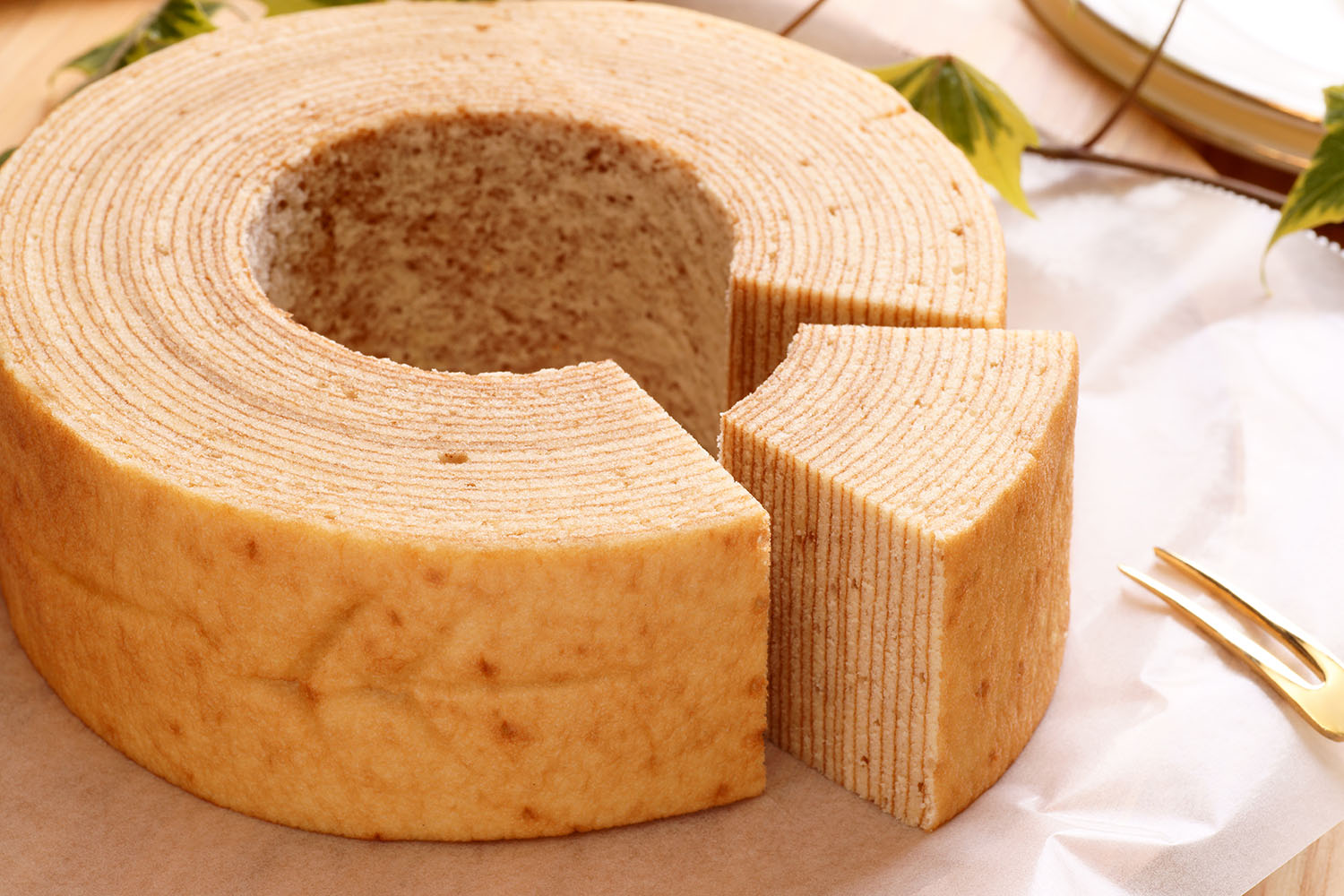By MARI YAMAGUCHI and AYAKA MCGILL Associated Press
NINOSHIMA, Japan (AP) — Baumkuchen originated in Germany but has become a wildly popular sweet in Japan, where a prisoner of war on a small western island started making the treat that has thrived in its new homeland.
Today, the confectionery known as “tree cake” because of the resemblance to a trunk with rings is considered a symbol of longevity and prosperity in Japan, where Baumkuchen festivals are regularly held.
Japanese adaptations, including those using maccha and sweet potatoes, are popular gifts at weddings and birthdays. Baumkuchen is sold in gift boxes at luxury department stores and individually wrapped, smaller versions can be found at convenience stores.
The sweet’s early years, however, are associated with a catastrophic earthquake and two world wars.
Making Baumkuchen is one of most popular activities on Ninoshima, just a 20-minute ferry ride from Hiroshima. But visitors also must learn the sleepy island’s role in Japan’s wartime history, according to Kazuaki Otani, head of the Juccheim Ninoshima Welcome Center.
At the outdoor center built over the site of a prisoner of war camp, amateur bakers pour batter on a bamboo pole and roast the mixture over a charcoal fire. As the surface turns light brown, a new layer is poured, creating brown rings as the cake grows thicker and the sweet smell wafts through the picnic area.
This is how a German confectioner named Karl Juchheim baked Baumkuchen while he was imprisoned on the island more than 100 years ago.
During Japan’s militarist expansion period beginning in the late 1890s, Ninoshima served as a military quarantine station as nearby Hiroshima developed into a major military hub. About 4,700 mostly German civilians and servicemembers were kept at 16 camps across Japan during World War I. The German prisoners at Ninoshima were given “a certain degree of freedom” and allowed to cook, Otani said.
Juchheim was running a bakery in Qingdao, China, then a German territory, when he was captured by the Japanese in 1915. He arrived on Ninoshima in 1917 with some 500 German POWs and is believed to have tested his Baumkuchen recipe there, Otani said.
When the war ended in 1918, Juchheim and about 200 fellow POWs stayed in Japan. In March 1919, Juchheim’s Baumkuchen commercially debuted in Japan at the Hiroshima Prefectural Products Exhibition. His handmade cake was hugely popular and attracted a big crowd of Japanese visitors, historical documents show.
The confectioner opened a pastry shop in Yokohama, near Tokyo, in 1922. The 1923 Great Kanto quake destroyed the business and forced Juchheim to move his family to the western port city of Kobe, where he opened a coffee shop serving Baumkuchen. That store was leveled by U.S. firebombings on Kobe two months before the end of World War II.
Yet he remained and grew the business in Kobe, where Juchheim Co., Ltd., still operates as one of Japan’s top confectioners with the help of his wife Elise and devoted Japanese staff.
The atomic bomb dropped by the U.S. on Hiroshima on Aug. 6, 1945, and another on Nagasaki three days later killed more than 210,000 by the end of that year. In the aftermath, about 10,000 severely injured victims were shipped from Hiroshima to Ninoshima for treatment and temporary shelter. Most died there and many of their remains have yet to be found, experts say.
Juchheim died of illness at a Kobe hotel on Aug. 14, 1945, the day before Japan announced its surrender.
“His baking was an expression of his wish for peace,” Otani said. “By sharing with visitors what things were like back then, I hope it gives people an opportunity to reflect on peace.”




